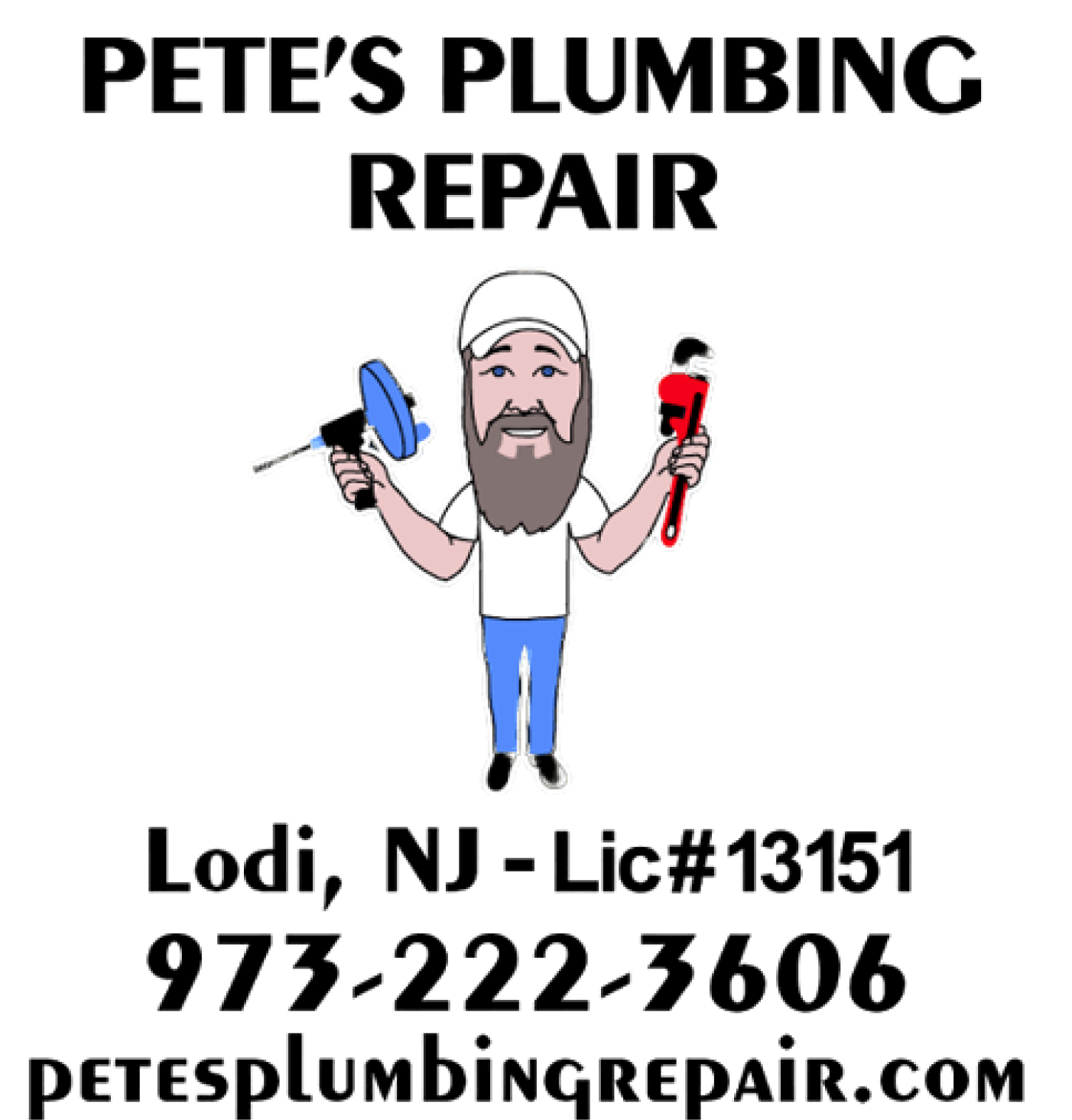Pipe Experts: Video Inspection Services in Lodi, Bergen & Passaic County, New Jersey
Unclog the Mysteries with Pete's Plumbing Repair LLC Video Inspection
Video inspection of stormwater and sewer pipes is one of our core services offered at Pete's Plumbing Repair LLC. Slow drains, strange gurgling sounds, or recurring clogs can be frustrating and leave you guessing about the source of the issue. We offer this powerful solution and work with commercial leaders to provide them with video inspection, patch relining, and drain maintenance needs. We also work with residential homeowners who require build-over stormwater or build-over sewer inspection points when renovating their property.
Our special inspection programs help us see inside your pipes to find any cracks or damage. This lets you know if your pipes are strong and working well. We can then fix the problems in different ways, like patching small cracks, digging up and fixing broken parts, or even replacing the entire pipe. Contact us today to understand about our video inspection services.
See It to Fix It: The Power of Plumbing Video Inspection
Precise Problem Identification
Traditional plumbing methods often involve digging or breaking through walls to locate the source of a clog or leak. Video inspection eliminates this invasive approach. We insert a tiny camera with a high-resolution feed directly into your pipes, allowing us to see cracks, breaks, root intrusion, and any other issues causing problems.
Save Time and Money
By pinpointing the exact location and nature of the problem, video inspection saves you time and money. We can avoid unnecessary exploratory work and focus on the area requiring repair. This targeted approach minimizes disruption to your home and keeps repair costs to a minimum.
Informed Decision-Making
Video inspection allows you to see the problem firsthand. We'll provide a clear recording of the camera footage, enabling you to understand the issue and make informed decisions about the best course of action for repair or replacement.
Sense of Security
Hidden plumbing problems can be a source of constant worry. Video inspection provides a sense of peace and shows that everything is right. Knowing what's happening inside your pipes allows you to address the issue head-on and prevent future problems.
Applications of Plumbing Video Inspection
- Drain line inspections to identify clogs, blockages, and root intrusion.
- Sewer line inspections to locate leaks, cracks, and collapsed sections.
- Locating hidden pipes before starting renovation projects.
- Identifying the cause of recurring slow drains or backups.
- Inspecting for potential problems before buying a new home.
Fast, Efficient, and Minimally Disruptive
Our video inspection process is fast, efficient, and minimally disruptive to your home. We use specialized equipment that can access most plumbing lines through existing cleanouts or drains. The inspection itself typically takes only a short time, and we'll provide you with a detailed report and recommendations on the next steps.
Precise Video Inspection Services in Lodi, Bergen & Passaic County, New Jersey
At Pete's Plumbing Repair LLC, you should expect innovative solutions to your plumbing problems. Our plumbers understand the benefits of video inspection and will use this technology to diagnose your issue accurately and efficiently. We offer upfront pricing for video inspection services, so there are no surprises. As a local, family-owned business serving Lodi, Bergen & Passaic County, New Jersey for over two decades, we're dedicated to building trust with our customers.
Let us offer a video inspection of your plumbing system today. Call us and talk to us as soon as possible.
FAQ's
What exactly is a video inspection and how does it work?
A video inspection uses a waterproof camera mounted on a flexible cable (pushrod) or a self-propelled crawler to travel inside pipes while transmitting live video to a monitor. Technicians can record footage, capture still images, and measure distance from the access point. Locating sondes let us map the problem outside. It’s a non-destructive diagnostic tool that reveals blockages, cracks, roots, offsets, and joint issues so decisions are based on what we actually see — not guesswork.
When should I request a video inspection for my plumbing?
Request an inspection when you have recurring clogs, slow drains, foul sewer odors, toilet backups, sagging yard areas, or after a major event (tree planting, heavy storm, or home purchase). It’s also smart before remodels that relocate plumbing or after temporary fixes that keep recurring. Video inspection is the best first step for persistent problems because it pinpoints causes, avoids unnecessary digging, and helps plan the correct repair method.
How long does a typical video inspection take?
Most residential inspections take 30–90 minutes depending on access, pipe length, and the number of laterals inspected. Simple sink or toilet lines are quick; full house-to-sewer lateral inspections take longer. If the line is heavily obstructed we may need to jet or rod it first, which extends time. A thorough inspection includes locating, recording, and creating a short report with stills — the extra minutes save guesswork later.
What affects the cost of a video inspection?
Price depends on access type (cleanout vs. wall access), pipe length, depth, number of laterals, need for a crawler versus pushrod, and whether cleaning is required first. Some contractors include inspection in a diagnostic fee or rebate it if repairs follow. Remote location (deep yard lateral or long run) and complex locating can add cost. Ask for a clear fee structure: flat diagnostic fee, per-foot charge, or bundled inspection+cleaning pricing.
How should I prepare my home for an inspection?
Clear access to cleanouts, basement drains, and the outdoor sewer cleanout. Move vehicles to allow technician parking, remove obstacles near access points, and make sure pets are secured. Note symptoms and the dates/times they occur (e.g., backups during heavy rain). If you know where the main cleanout is, point it out. Good access and a quick symptom history reduce time on site and help us focus the inspection.
What common problems will a camera reveal?
Cameras show tree root intrusions, collapsed or bellied sections, misaligned joints, cracks, corrosion, grease and scale buildup, foreign objects, offsets from settling, and failed pipe connections. They also show pipe material and diameter, which helps decide repair options. Video clarifies whether a localized repair, pipe lining, or full replacement is required, removing guesswork and avoiding unnecessary excavations.
Can a camera pinpoint the problem’s location in my yard or house?
Yes — technicians often use a sonde (radio transmitter) inside the camera to trace the camera’s position from above ground. This provides a depth and horizontal location for problem spots, generally accurate within a few feet. Accuracy can be affected by soil conditions, interference from nearby utilities, and depth. The locator helps plan targeted digs or non-invasive repairs and avoids widespread trenching when repairs are needed.
Are there limitations or things a video camera can’t detect?
Yes — cameras can’t “see” through solid obstructions like heavy calcification that wholly blocks passage; hairline cracks that only leak under pressure; or small leaks above the pipe (within walls) that don’t produce visible internal evidence. Poor visibility from grease or turbidity may obscure detail. Also, the camera won’t repair problems — it’s diagnostic. In some cases pressure testing, dye tests, or thermal imaging may be needed in addition to CCTV.
Should you clean the line before or after the inspection?
Often it’s best to clean first: heavy grease, roots, or debris can hide defects. Jetting or rodding to clear the line before running the camera reveals the underlying pipe condition and prevents missed findings. However, in urgent backup scenarios you might inspect first to locate the blockage quickly. A combined approach — clean, then inspect to confirm — is the most reliable for accurate diagnosis and determining repair needs.
What’s the difference between push-rod cameras and crawlers?
Push-rod cameras are flexible and ideal for residential laterals and sink/toilet lines; they’re cost-efficient and easy to deploy. Crawlers are motorized units used for larger sewer mains or long runs and can traverse flowing pipes and obstructions more robustly. Choice depends on pipe diameter, length, and condition. Technicians select equipment that gives the best view and safe access for documenting defects and locating trouble without damaging the system.
client testimonials


